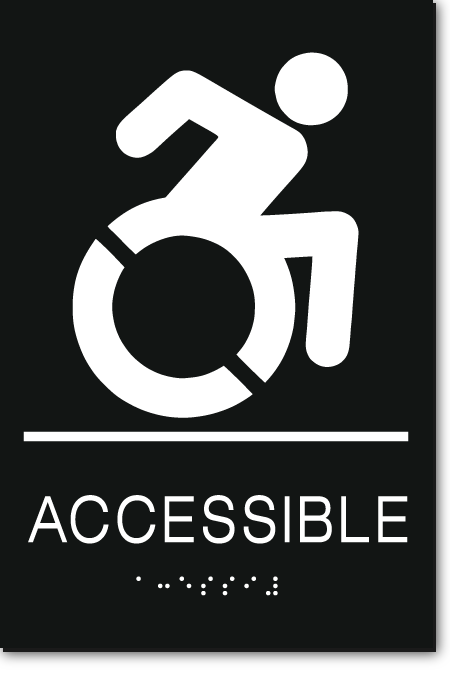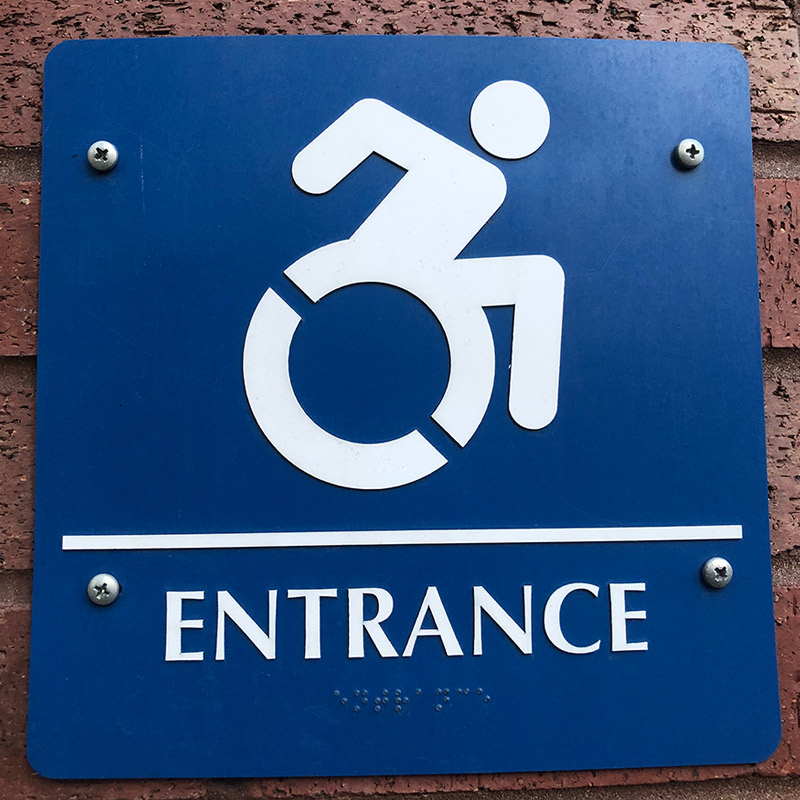The Advantages of Using High-grade ADA Signs in Your Service
The Advantages of Using High-grade ADA Signs in Your Service
Blog Article
Exploring the Trick Attributes of ADA Indicators for Boosted Accessibility
In the realm of ease of access, ADA indications act as silent yet effective allies, making sure that areas are comprehensive and navigable for people with specials needs. By integrating Braille and tactile elements, these signs damage obstacles for the visually impaired, while high-contrast color pattern and understandable typefaces satisfy diverse aesthetic requirements. Additionally, their strategic placement is not arbitrary yet instead a computed initiative to help with smooth navigation. Yet, past these attributes exists a deeper story concerning the evolution of inclusivity and the continuous dedication to developing equitable areas. What a lot more could these signs represent in our search of global ease of access?
Significance of ADA Conformity
Making certain compliance with the Americans with Disabilities Act (ADA) is important for cultivating inclusivity and equal access in public spaces and offices. The ADA, enacted in 1990, mandates that all public facilities, employers, and transport solutions fit people with disabilities, ensuring they take pleasure in the very same rights and possibilities as others. Conformity with ADA criteria not just fulfills lawful obligations but also improves a company's online reputation by demonstrating its commitment to diversity and inclusivity.
One of the key aspects of ADA conformity is the execution of accessible signage. ADA indicators are developed to guarantee that individuals with impairments can easily browse through buildings and spaces.
Moreover, adhering to ADA regulations can minimize the threat of possible fines and lawful repercussions. Organizations that stop working to comply with ADA standards may encounter fines or claims, which can be both financially burdensome and destructive to their public picture. Thus, ADA compliance is important to promoting an equitable setting for every person.
Braille and Tactile Aspects
The incorporation of Braille and tactile components right into ADA signage symbolizes the principles of access and inclusivity. It is normally put underneath the matching text on signage to ensure that individuals can access the info without aesthetic aid.
Responsive aspects expand beyond Braille and include increased signs and personalities. These parts are designed to be discernible by touch, enabling people to recognize area numbers, toilets, leaves, and various other critical areas. The ADA sets details guidelines regarding the dimension, spacing, and placement of these tactile elements to maximize readability and make sure consistency across various atmospheres.

High-Contrast Color Pattern
High-contrast color design play a pivotal role in boosting the exposure and readability of ADA signs for people with visual problems. These plans are essential as they make the most of the distinction in light reflectance between message and background, ensuring that indicators are conveniently discernible, even from a distance. The Americans with Disabilities Act (ADA) mandates using certain shade contrasts to suit those with minimal vision, making it a crucial facet of compliance.
The efficiency of high-contrast shades hinges on their capacity to stand apart in numerous illumination problems, including poorly lit atmospheres view it and areas with glare. Usually, dark text on a light history or light message on a dark history is employed to attain optimal contrast. Black text on a yellow or white history offers a raw visual distinction that assists in fast acknowledgment and understanding.

Legible Fonts and Text Size
When taking into consideration the style of ADA signs, the selection of understandable font styles and ideal Recommended Site message size can not be overstated. The Americans with Disabilities Act (ADA) mandates that fonts should be not italic and sans-serif, oblique, script, extremely ornamental, or of unusual kind.
According to ADA standards, the minimal message elevation need to be 5/8 inch, and it ought to raise proportionally with seeing range. Uniformity in text size contributes to a cohesive visual experience, aiding individuals in navigating atmospheres successfully.
Moreover, spacing in between lines and letters is important to clarity. Appropriate spacing avoids characters from showing up crowded, enhancing readability. By sticking to these criteria, developers can dramatically boost availability, guaranteeing that signs offers its designated objective for all individuals, no matter their visual capabilities.
Efficient Positioning Approaches
Strategic placement of ADA signs is crucial for maximizing ease of access and making certain compliance with legal criteria. ADA standards stipulate that signs must be installed at an elevation in between 48 to 60 inches from the ground to guarantee they are within the line of view for both standing and seated individuals.
In addition, signs should be put surrounding to the latch side of doors to allow easy recognition before entry. Consistency in indication placement throughout read the full info here a facility boosts predictability, decreasing complication and enhancing general user experience.
Verdict
ADA indicators play an important duty in promoting accessibility by integrating functions that deal with the requirements of individuals with impairments. Integrating Braille and tactile aspects guarantees crucial details is accessible to the visually damaged, while high-contrast color systems and readable sans-serif typefaces improve exposure across various lighting conditions. Reliable positioning techniques, such as ideal placing heights and strategic places, better promote navigating. These aspects jointly promote a comprehensive setting, underscoring the relevance of ADA compliance in making sure equal gain access to for all.
In the realm of accessibility, ADA indicators serve as quiet yet powerful allies, making certain that spaces are accessible and comprehensive for people with impairments. The ADA, passed in 1990, mandates that all public centers, companies, and transportation services suit individuals with specials needs, guaranteeing they take pleasure in the exact same rights and possibilities as others. ADA Signs. ADA indications are developed to make sure that people with specials needs can conveniently navigate with spaces and structures. ADA guidelines state that indicators should be mounted at an elevation in between 48 to 60 inches from the ground to guarantee they are within the line of sight for both standing and seated individuals.ADA indicators play an essential duty in promoting ease of access by incorporating features that resolve the demands of individuals with specials needs
Report this page